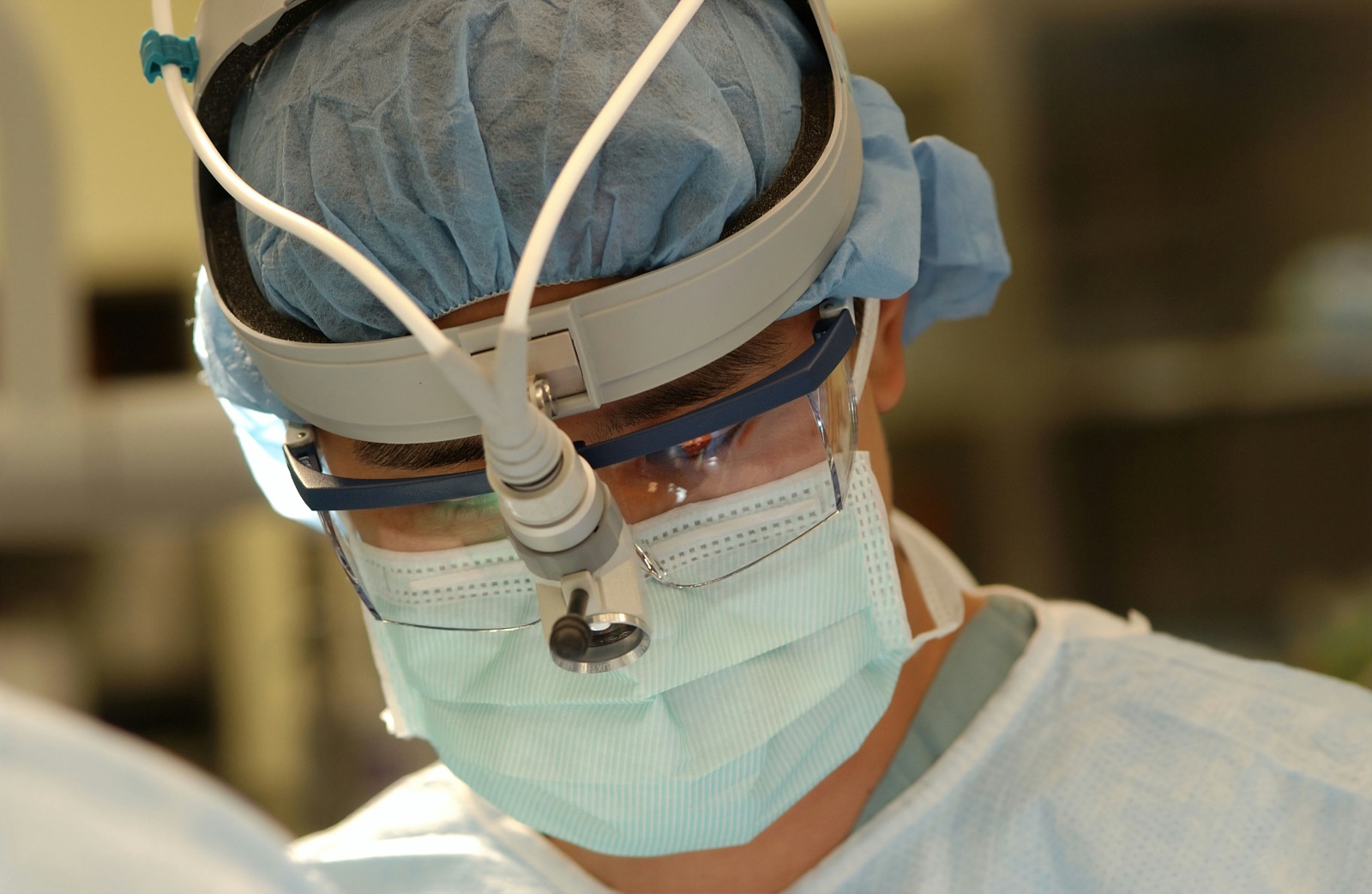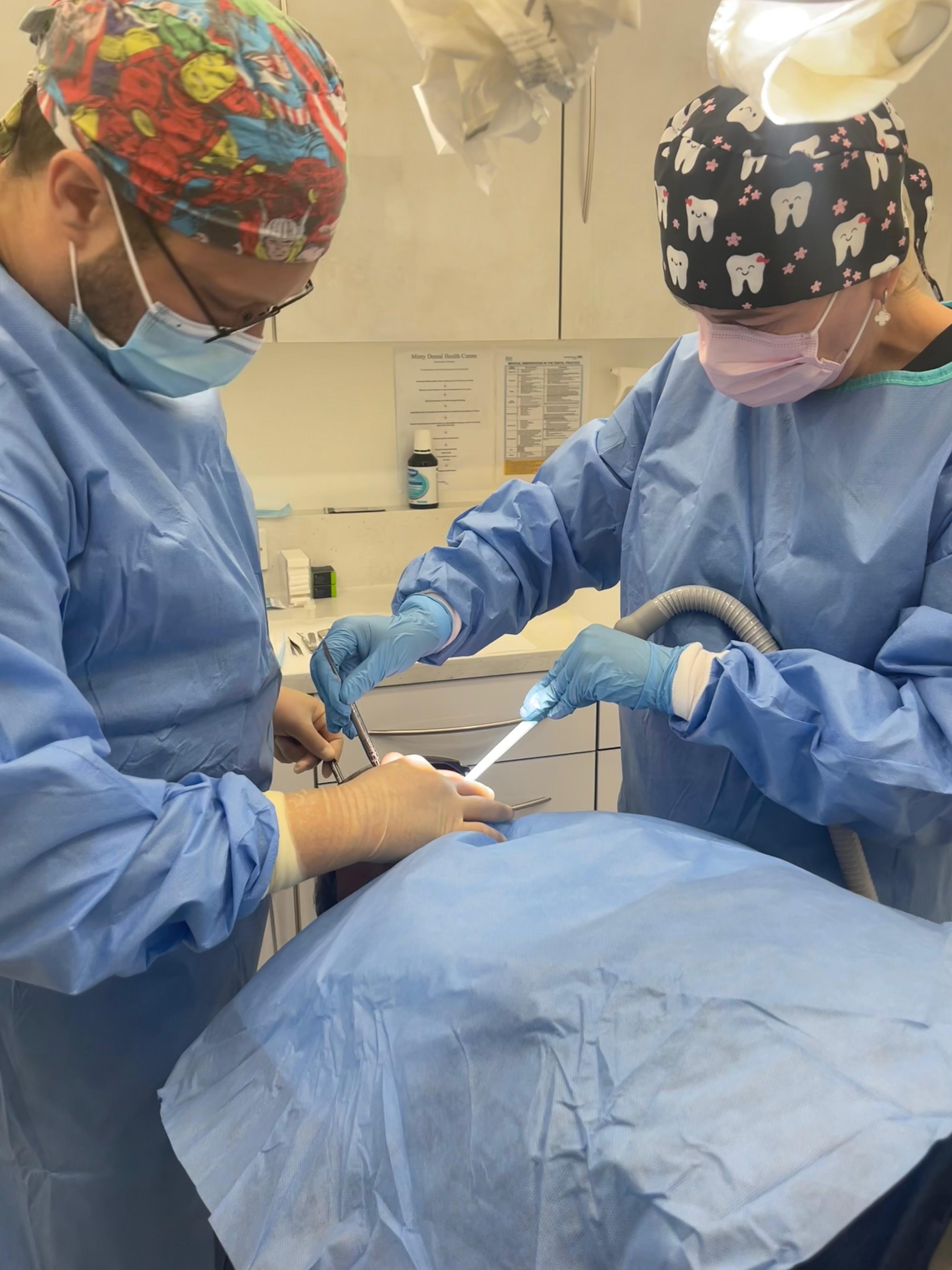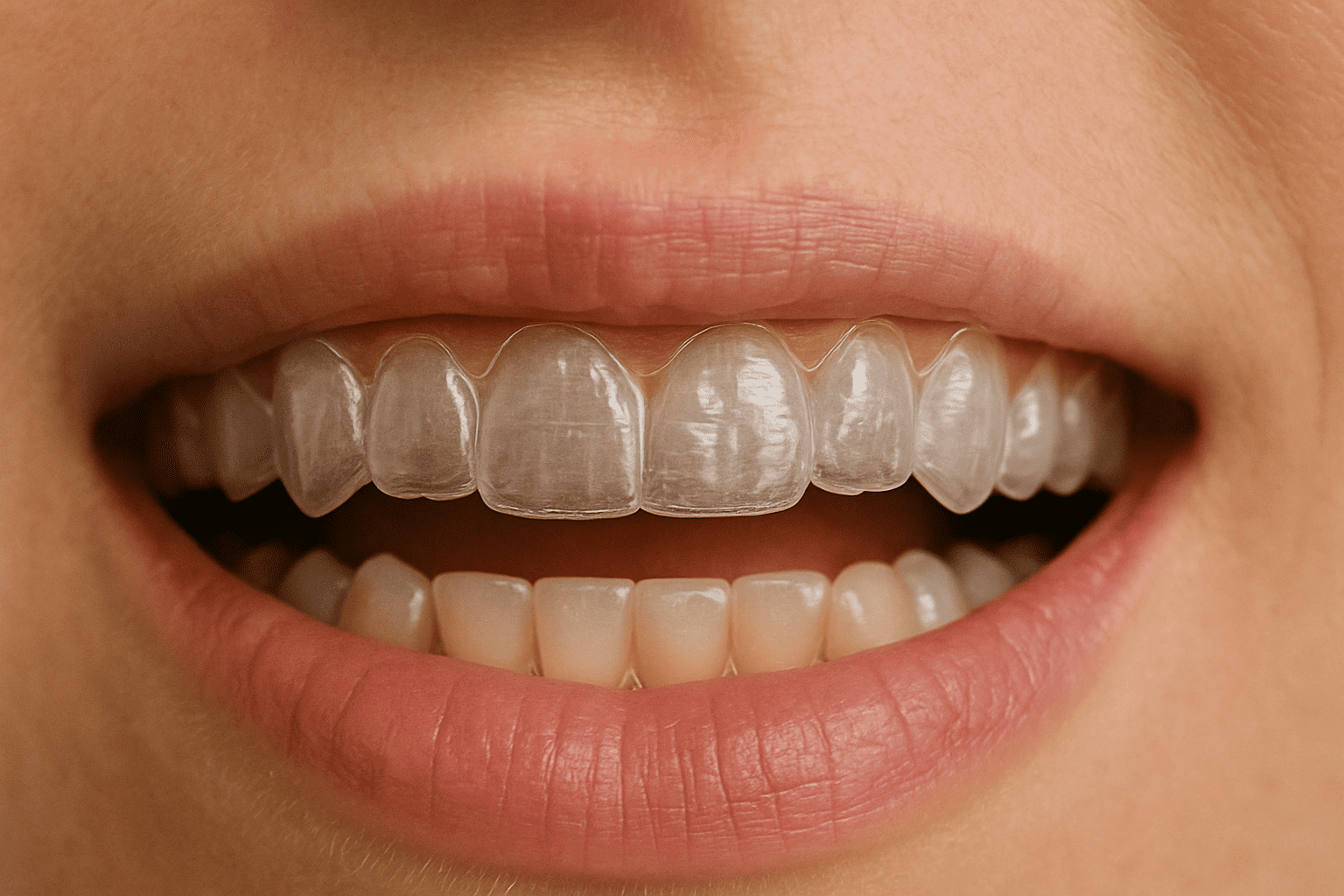What Is Oral and Maxillofacial Surgery? Your Complete Guide to Face and Jaw Health
Facing oral surgery? We’ll explore common procedures, what to expect, recovery tips, and when to seek specialized care for a confident smile.

If you've been told you need oral surgery, you're probably wondering what exactly that means. Don't worry, it's not as scary as it sounds. This type of surgery can resolve issues that impact your daily life, from eating and speaking to sleeping and smiling with confidence.
Let's break down everything you need to know about oral surgery.
Understanding Oral Surgery
While your regular dentist handles tasks such as cleanings, fillings, and extractions, oral surgery addresses more complex issues that require surgical solutions.
When You Might Need Oral Surgery
Everyday Reasons
These are the most common situations that bring patients to oral surgeons. Many people are surprised to learn that routine dental problems sometimes need specialized surgical treatment.
- Wisdom teeth problems: When your wisdom teeth are stuck (impacted) and causing pain or crowding, a simple extraction might not be enough. Oral surgery handles complex extractions safely.
- Dental implants: If you need implants but don't have enough jawbone, clinicians can rebuild the bone structure first. They also place implants in difficult locations.
Sometimes you’ll need to see a more specialized “Maxillofacial Surgeon” for the following scenarios:
Jaw Pain
Constant jaw clicking, locking, or pain often needs specialized treatment beyond what a regular dentist can provide.
From Birth or Development
Some people are born with conditions that affect their face and jaw development, or develop problems as they grow. These situations often require multiple surgeries over time.
- Cleft lip and palate: Babies born with these conditions need multiple surgeries as they grow. Maxillofacial surgeons work with teams to restore normal eating, speaking, and appearance.
- Jaw misalignment: It occurs when your upper and lower jaws don't match up properly. It affects everything from chewing to breathing. Surgery can fix the underlying bone structure.
Cosmetic Reasons
While function comes first, many maxillofacial procedures also improve appearance. Sometimes the cosmetic benefit is the main goal, especially when facial proportions affect confidence.
Facial harmony: Sometimes the problem isn't just functional, it's about how your face looks. These surgeons can reshape jaws, chins, and facial contours.
How to Know If You Should Ask for a Referral
Ask your dentist about a referral if you have:
- Persistent jaw pain or clicking
- Difficulty chewing or opening your mouth
- Facial swelling that won't go away
- Problems with bite alignment
- Sleep breathing issues
- Facial injury from trauma

Most Common Procedures Explained
Tooth and Jaw Procedures
These procedures focus on problems with your teeth and the bones that support them. They range from complex extractions to major jaw repositioning surgeries.
- Wisdom tooth removal: This goes beyond simple extraction. Clinicians can remove teeth that are completely buried in bone or positioned in dangerous spots near nerves.
- Dental implant surgery: More than just placing the implant. Clinicians can rebuild missing bone, lift sinus floors, and create the foundation for successful implants.
- Jaw realignment (orthognathic surgery): This fixes problems where your jaws don't line up. Recovery takes months, but it can transform your ability to eat, speak, and breathe. This is usually completed by Maxillofacial surgeons instead of Oral Surgeons.
Trauma and Reconstruction
When accidents happen, maxillofacial surgeons put faces back together. Modern techniques can achieve remarkable results even after severe injuries.
- Facial fracture repair: Using tiny plates and screws, clinicians rebuild broken facial bones. Modern techniques hide most scars inside your mouth.
- Bone grafts: When disease or injury destroys jawbones, surgeons can rebuild it using bone from other parts of your body or synthetic materials.
- Tumor removal: Removing growths from your mouth or jaw, then reconstructing the area to maintain function and appearance.
TMJ and Sleep Disorders
Problems with your jaw joint or breathing during sleep can significantly impact your quality of life. Surgical solutions are available when conservative treatments don't work.
- TMJ surgery: When conservative treatments fail, surgery can repair or replace damaged jaw joints.
- Sleep apnea surgery: Moving your jaws forward to open your airway, offering an alternative to CPAP machines for some patients.
Cleft and Pediatric Care
Children with facial birth defects need specialized care that continues as they grow. Treatment involves coordinated care between multiple specialists.
- Cleft repairs: Multiple staged surgeries to close gaps in the lip and roof of the mouth, usually starting in infancy.
- Growth corrections: Helping children's jaws develop properly when genetics or injury interferes with normal growth.
Cosmetic Enhancements
Many maxillofacial surgeons also perform aesthetic procedures, especially those that involve the underlying bone structure of the face.
- Chin reshaping: Changing chin size or position to improve facial balance.
- Jaw contouring: Reshaping heavy or angular jawlines for aesthetic reasons.
- Facial implants: Adding volume to cheeks or other facial areas using synthetic implants.
What Actually Happens During Surgery
Understanding the process helps reduce anxiety. Here's what you can expect:
Step-by-Step Overview
1. Evaluation and Planning A surgeon examines you and reviews detailed scans. For complex cases, they use 3D computer planning to map out exactly what they'll do.
2. Imaging and Preparation CT scans create detailed pictures of your facial bones. Some surgeons use this data to create 3D-printed models or surgical guides.
3. Anesthesia Most procedures use general anesthesia, meaning you're completely asleep. Simple procedures might only need local numbing.
4. The Procedure Your surgeon works through hidden incisions inside your mouth when possible. External cuts are placed in natural creases to minimize visible scars.
5. Recovery You wake up in a recovery room with nursing staff monitoring you. Most people go home the same day or after one night in hospital.
How Long Procedures Take
- Wisdom teeth: 20-60 minutes - this is most often completed in the Dental Clinic but can sometimes require treatment in the hospital setting.
- Single dental implant: 30-90 minutes - Can be done in the dental clinic with your trusted clinician.
- Jaw alignment surgery: 2-5 hours - (Hospital surgery).
- Facial fracture repair: 1-4 hours - (Hospital surgery).
- TMJ surgery: 1-3 hours - (Hospital surgery).
- Major reconstruction: 4-12 hours - (Hospital surgery).
Average Recovery Times
- Minor procedures: 3-7 days
- Implant surgery: 1-2 weeks for soft tissue, 4-6 months for bone integration
- Jaw surgery: 4-6 weeks for initial healing, 3-4 months for complete bone healing
- Facial trauma: 2-6 weeks depending on severity

Your Journey: Consultation to Recovery
Knowing what to expect removes much of the anxiety around surgery.
What to Expect at Your First Visit
- Medical history review: Your surgeon needs to know about medications, allergies, and previous surgeries.
- Physical examination: They'll check your bite, jaw movement, facial symmetry, and nerve function.
- Imaging: X-rays, CT scans, or 3D imaging to see the problem clearly.
- Treatment discussion: Your surgeon explains options, risks, benefits, and expected outcomes.
- Questions and planning: This is your time to ask anything. Good surgeons encourage questions.
Preparation Checklist
Two weeks before:
- Get medical clearance if you have health conditions
- Stop smoking (this is crucial for healing)
- Arrange time off work
- Plan for help at home
One week before:
- Review medication instructions
- Stock up on soft foods
- Prepare ice packs
- Fill prescriptions
Day of surgery:
- Follow fasting instructions exactly
- Wear comfortable clothes
- Bring someone to drive you home
- Leave jewelry and valuables at home
Understanding Risks and Safety
All surgery carries risks, but maxillofacial surgery is generally very safe when performed by qualified surgeons. Common risks include:
Temporary effects:
- Pain and swelling (expected and manageable)
- Bruising around the surgical site
- Temporary numbness in lips or chin
- Difficulty eating solid foods initially
Rare complications:
- Infection (prevented with antibiotics)
- Permanent nerve damage (less than 1% of cases)
- Problems with bite alignment
- Need for additional surgery
Anesthesia risks:
- Nausea and sore throat (common, temporary)
- Serious complications (extremely rare with modern monitoring)
Recovery Tips
First 48 hours:
- Use ice packs 20 minutes on, 20 minutes off
- Keep your head elevated when sleeping
- Take pain medication as prescribed, not when pain becomes unbearable
- Stick to liquids and very soft foods
First week:
- Gentle salt water rinses after meals
- No spitting, straws, or vigorous rinsing
- Soft diet: smoothies, soups, mashed potatoes, scrambled eggs
- Rest and avoid strenuous activity
First month:
- Gradually return to normal foods as comfort allows
- Follow all follow-up appointments
- Don't smoke or use tobacco products
- Protect your face from accidental bumps
When to Call Your Surgeon
Contact your surgeon immediately if you experience:
- Severe pain not controlled by medication
- Heavy bleeding that doesn't stop with pressure
- Signs of infection (fever, increasing swelling, bad taste)
- Difficulty breathing or swallowing
- Numbness that seems to be getting worse rather than better
Advanced Specializations
Some maxillofacial surgeons focus on specific areas that require extra training and expertise.
Facial Trauma Repair
Car accidents and sports injuries can cause complex facial fractures. Surgeons use tiny plates and screws to rebuild the facial skeleton while preserving important structures like tear ducts and nerve pathways.
Modern techniques:
- Hidden incisions inside the mouth and along natural creases
- 3D-printed guides for precise bone alignment
- Dissolvable plates that don't need removal surgery
Correcting Congenital Deformities
Babies born with cleft lip and palate need multiple surgeries as they grow. Modern cleft teams achieve remarkable results:
- Only 0.6% of children need lip revision surgery
- 95% success rate for bone grafts
- Most children develop normal speech and appearance
Rebuilding After Cancer
When cancer affects the mouth or jaw, surgeons must remove the tumor and rebuild the area. This often involves:
- Microsurgery to transfer tissue from other body parts
- Custom 3D-printed implants to replace missing bone
- Coordination with oncologists for complete cancer care
TMJ and Sleep Apnea Advances
TMJ treatments have evolved:
- Arthroscopy (keyhole surgery) for many joint problems
- Custom-designed joint replacements for severe arthritis
- Minimally invasive approaches that reduce recovery time
Sleep apnea surgery:
- Moving both jaws forward to enlarge the airway
- Alternative to CPAP machines for appropriate candidates
- Success rates around 90% for carefully selected patients
Conclusion
Oral or Maxillofacial surgery encompasses a wide range of procedures that can dramatically improve your quality of life. Whether you're dealing with wisdom teeth, jaw misalignment, facial trauma, or complex reconstruction needs, modern techniques offer safer procedures and better outcomes than ever before.






